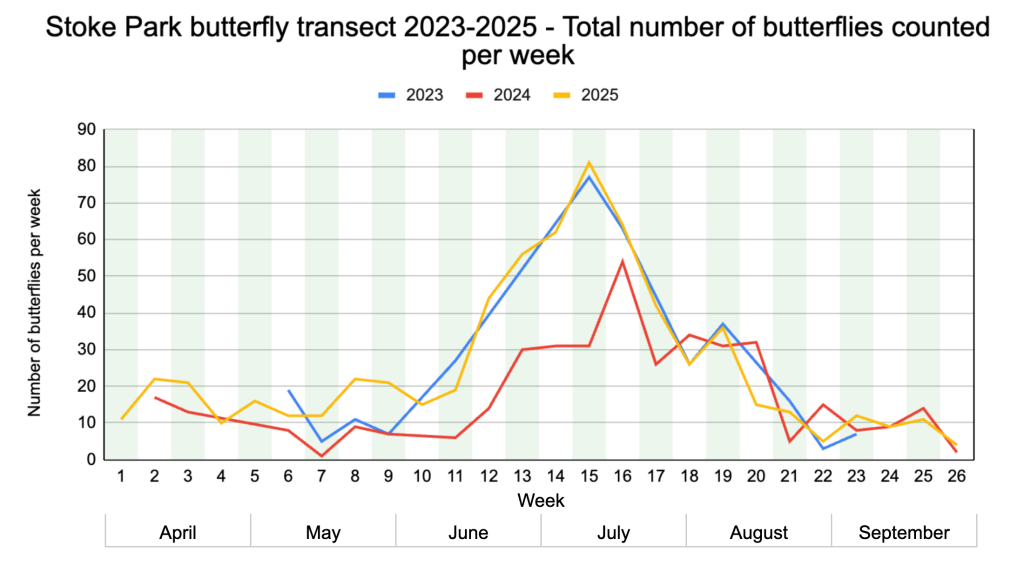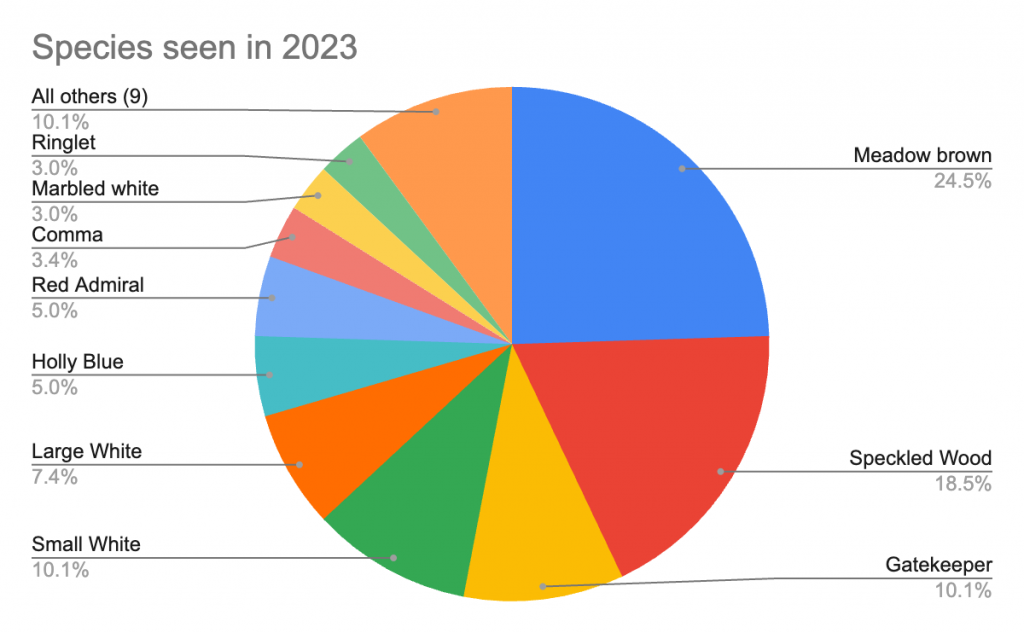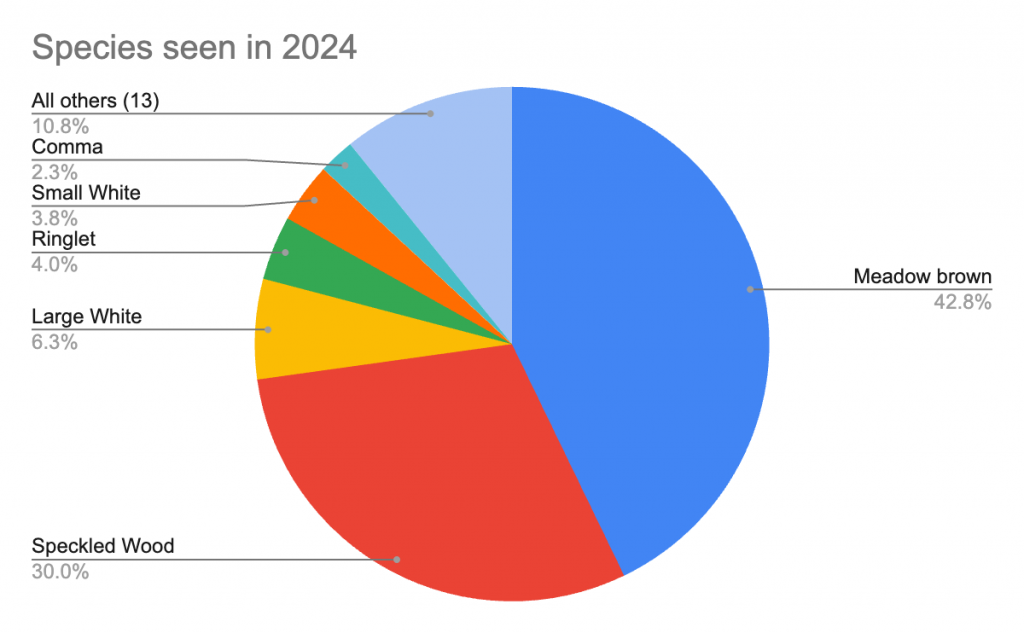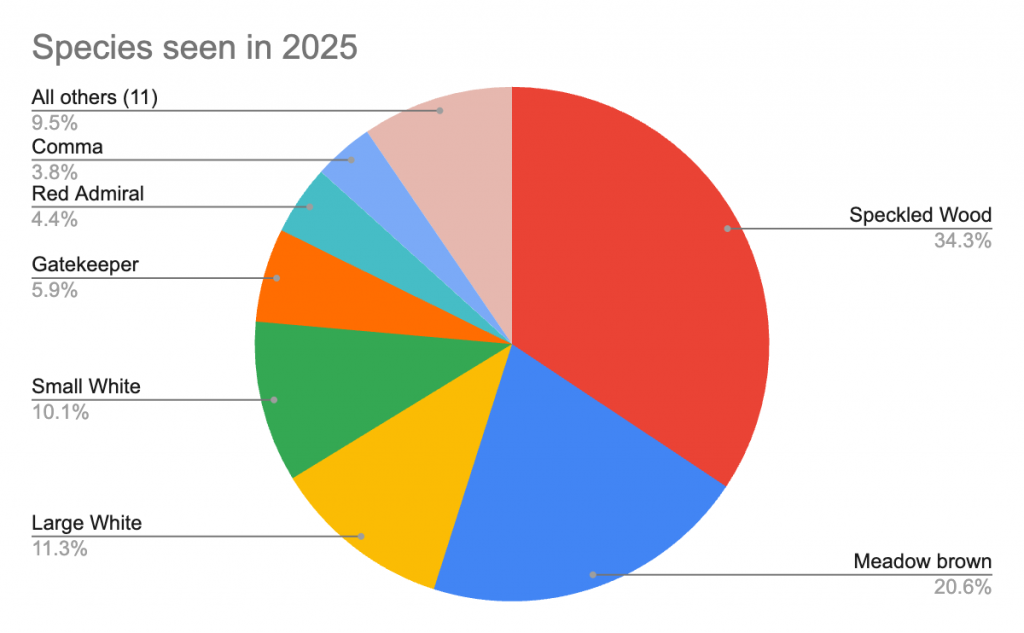I’ve just finished collating our butterfly count data for 2025. Here’s what the numbers show:

2024 – the red line – was a poor year for butterflies for us. When I was doing the count this year (2025), I felt like I saw more butterflies than ever. However, as you can see from the chart (compare the blue and yellow lines), the numbers in 2025 were more or less the same as they had been two years ago.
This matches with the results from Butterfly Conservation’s Big Butterfly Count for 2025:
“While [the count for 2025 is] a marked improvement on last summer’s record low … it is only broadly average by modern standards…” (Butterfly Conservation, 9 September 2025)
Another finding in our results that also appeared in the Big Butterfly Count, is the difference in the species we saw in the three years. The Big Butterfly Count figures show a 40% drop in Meadow Brown numbers between 2024 and 2025.
In our transect, we saw more Meadow Browns than any other species in 2023 and 2024. In keeping with the Big Butterfly Count results, we saw significantly fewer Meadow Browns in 2025.
The species that we saw the most this year was in fact the Speckled Wood.
In the charts below, the Meadow Brown is shown in blue and the Speckled Wood in red.



In contrast, the Large and Small Whites had a very good year in the 2025 Big Butterfly Count and this is reflected in our figures as well. In 2024, the Small White only counted for 3.8% of all the butterflies that we saw, whereas in 2025, 10.1% of the butterflies we saw were Small Whites.
Why does this matter?
Butterflies are an “indicator species”. If they are doing well, other species are doing well. (And the opposite is also true – if butterflies are doing poorly, this means that many other species are having a bad time).
What next?
The UK Butterfly Monitoring Scheme (UKBMS) states that we need at least five years of data to be able to see meaningful trends in our numbers.
In the meantime, the ongoing management of Stoke Park is being undertaken with butterfly conservation in mind. We have recently scythed over an acre of land that was previously cut by machinery. This is helping to establish a wildflower meadow, a fantastic habitat for butterflies. The use of hand tools rather than machinery also minimises damage to butterflies in all stages of their life cycle (egg, larvae, chrysalis and adult).
The International Union for Conservation of Nature (IUCN) recently published a new Red List of threatened species of butterflies. Two butterfly species that have been seen in Stoke Park are newly categorised as vulnerable: the Small Skipper and the Essex Skipper. Thankfully, the work we are already doing to create and improve our wildflower fields and other habitats will help these species to thrive in Stoke Park.
Can I help?
Yes please! The transect survey that we do requires a significant commitment from our volunteers and cannot be done by one person alone. We can always do with more helpers.
Walking the transect takes about an hour, and must be done at least once a week between April and September. If you can spare one hour during any one of those 26 weeks, this is a big help to us.
You don’t need to be a butterfly expert! We will give you tips on how to identify the butterflies that you see and how to record them. If you are particularly interested in the survey and/or in butterflies, we do one-hour training presentations during the Spring and Summer which you are welcome to attend.
Added bonus – counting butterflies is great fun!
Get in touch if you’d like to find out more.
What else do you do in Stoke Park?
Lots of things! See our blog post about a day in the life of a Stoke Park volunteer. If you’d like to volunteer with us, sessions are every Thursday and the first and third Saturdays of the month. They run 10am-12:30pm and we always have a hot drink and a biscuit!